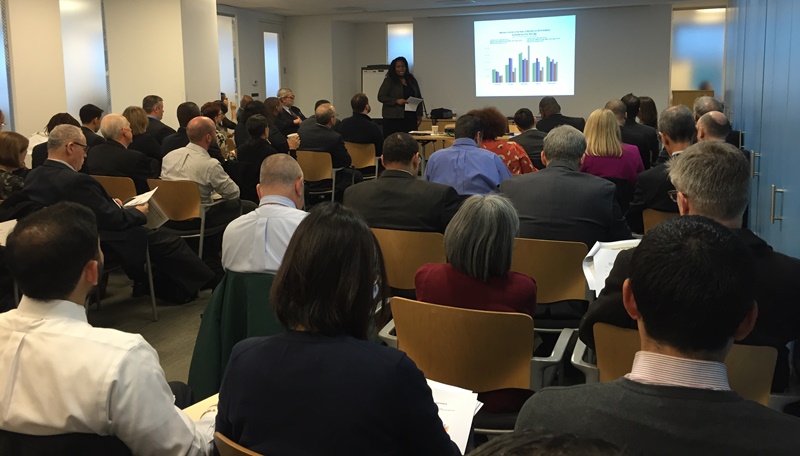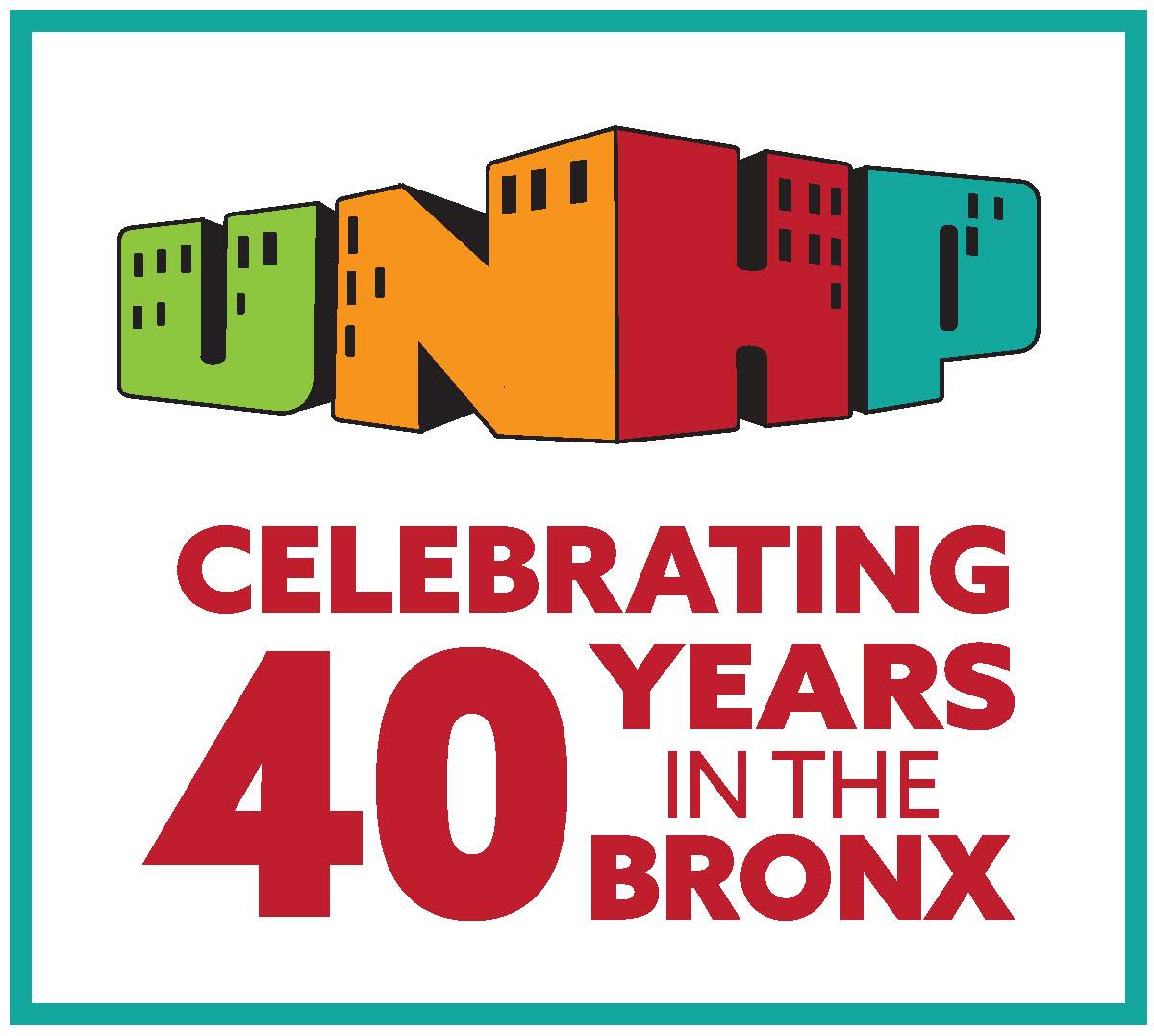6.2M BIP Data Points; More Needed to Improve NYC Rental Housing // Views from the Northwest Bronx
This post is part of a series aimed at framing an inclusive and informed discussion on issues affecting the affordability and viability of Northwest Bronx neighborhoods today. We invite you to share these posts—available on our website—widely, and join the conversation by sending us an email, reaching out via Twitter, or connecting with us on Facebook. Use #ViewsNWBX to let us know you’re interested!
In the early 2000s, UNHP began to capture quantitative data to measure possible speculative investment. This effort was the origin of what would become the Building Indicator Project (BIP). The effort engaged community groups, organizers, financial institutions, and various real estate professionals to develop a scoring algorithm to reflect current building conditions of multifamily properties. After conducting many physical inspections and years of refinement, the UNHP BIP database is generally accepted as an indicator of financial and/or physical distress in a property. BIP is a database that leverages public data to gauge distress; it currently captures demographic data, housing and building code violations, and several city liens from municipal agencies for over 62,000 properties with five units or more in all five boroughs; amounting to a staggering 6.2 million data points. A score of 800 or more is indicative of a property likely to be physically and/or financially distressed. The formula is weighted to prevent disproportionate scoring based on building size.
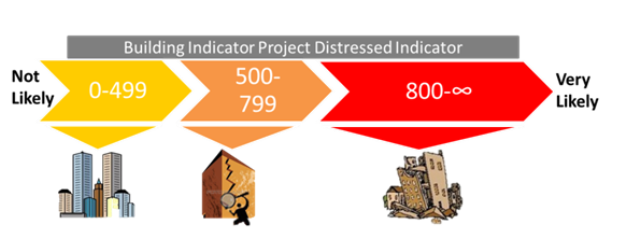
Though the project provides a snapshot of building conditions citywide, it was born of concern for the Bronx multifamily market. Indications of speculative investment, high rent-burden, and displacement pressures in the city’s last affordable borough led UNHP to create a tool to proactively identify problem buildings. The rising sales prices of Bronx multifamily housing stock do not seem to be supported by the economic conditions of existing tenants. The Bronx has had negative growth in median household income over the past twenty years; when adjusted for inflation incomes fell 20 percent from 1989 to 2015. Over 30 percent of Bronx households live below the federal poverty line and the majority of new residents coming into the borough are making even less than our current residents. Many residents are extremely rent-burdened: households pay in excess of 50 percent of income toward housing expenses. The Bronx has experienced real estate speculation in the past and the tenants in such buildings are the ones who suffer the most. Landlords who engage in this type of speculative real estate investment sometimes improve their cash flow by neglecting the physical needs and repairs of the building, saving on operating costs, and encouraging tenants to move—ultimately resulting in higher rents.
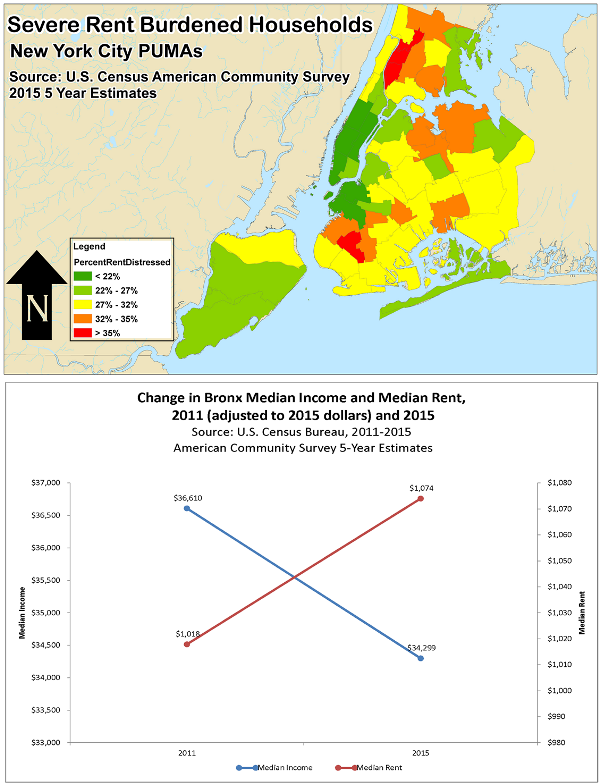
Multi-generational ownership and traditional financing are increasingly becoming behaviors of the past. A combination of real estate as a short-term investment and the rise of non-traditional lending expose our already competitive real estate market to greater risk. As the nature of multifamily ownership and lending transforms in New York City, renters, community groups, and municipalities must ensure soundness and affordability. UNHP now disseminates BIP data to 39 financial institutions, 4 regulators, and 46 community groups on an ongoing basis to identify and intervene in troubled properties. Our data-driven approach is an effective tool for organizers to target their on-the-ground work, for lenders to prioritize poorly managed properties, and for regulators to examine Community Reinvestment Act (CRA) ratings.

While the database is a detailed, informative, and effective tool, the analysis is intentionally conservative and balanced. We maintain that these data points are an indicator of possible distress; new data is thoughtfully integrated and certain indicators of distress are not measured. Certain forms of harassment, displacement, and over-leveraging cannot be captured with available data sources and qualitative data is not considered at all.
UNHP is concerned that the real level of distress in NYC multifamily properties is not entirely captured in our database. The number of apartments that meet our threshold of 800 or more has steadily declined throughout the past few years, though this may not serve as an indication of improved conditions. A decline in Housing Preservation & Development (HPD) violations among the buildings we track is a case in point. The City is notified of potential violations via a complaint-driven system, 311, where the burden is on the tenant to initiate the case. This is problematic for many reasons: tenants may hesitate to act due to fear of harassment or eviction, immigration status, or ‘illegal’ apartment use (room rentals, dividing apartments, etc.). Another area of concern is the categorization of 311 calls. Housing complaint calls can be directed to HPD, the Department of Environmental Protection (DEP) or the Department of Buildings, and not all complaints result in inspections and violation placement. The department to which the complaint is directed depends both on how the caller describes the complaint and how the 311 operator understands that description. Recent changes in the way the DEP shares its data have resulted in the exclusion of delinquent water and sewer charges in the BIP scores. Given the high cost of water in multifamily properties, this non-payment is an important indicator of distress and can lead to lien sale. There are also issues of access and entry when inspections are made to evaluate if a complaint should be escalated into a violation. Proactive roof-to-cellar inspections would alleviate some of this burden and may more accurately capture conditions.
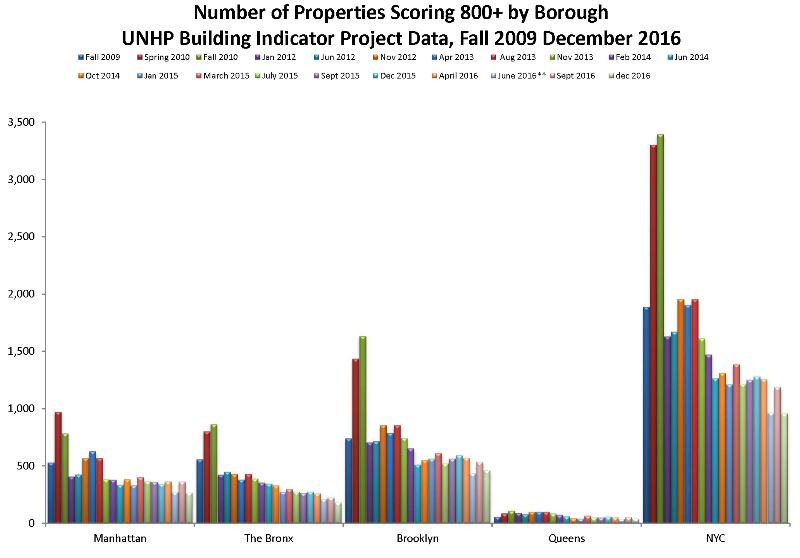
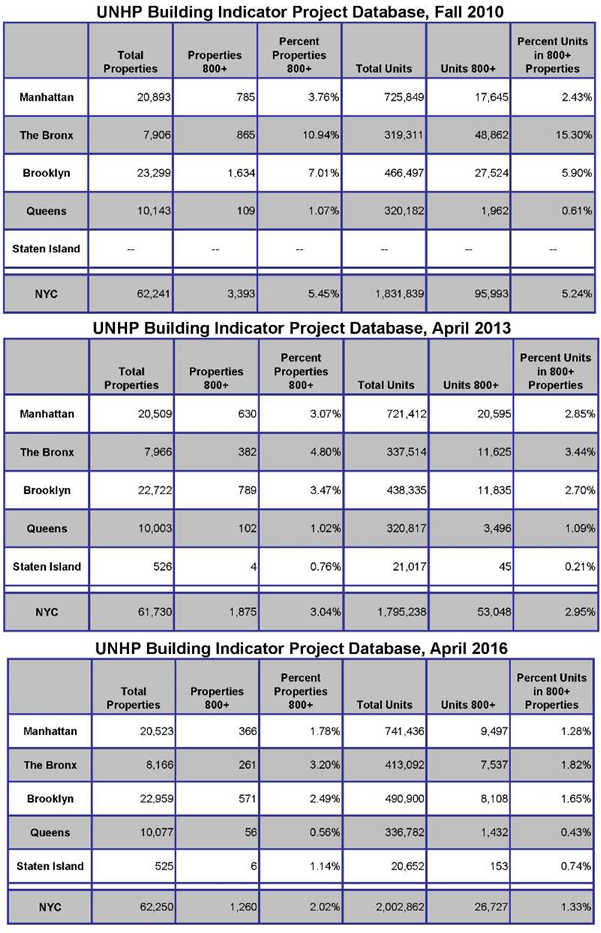
UNHP has successfully garnered support through our Multifamily Assistance Center meetings where we collaborate with banks to pursue improvements in distressed properties. UNHP has distributed and discussed BIP data with multifamily mortgage lenders since 2007, observing improvements in properties where the bank follows-up with the owner to address physical and financial distress. In 2014, The New York State Department of Financial Services began to use BIP data to access not just the quantity of loans in low-income communities but also the quality of those loans and their impact. The use of the BIP by regulators has increased the interest and depth of its use as an asset management tool by lenders.
Of additional concern is the rise in unregulated non-traditional lenders, foreign investment, and private equity in the multifamily real estate market. These entities provide financing and are not constrained by the same regulatory restraints as traditional lenders. Preliminary BIP analysis indicates that properties financed by non-traditional lenders are in worse condition than properties financed by traditional lenders. Predatory equity can take many forms but the end result is often displacement of low-income tenants in the pursuit of higher profits. There are efforts citywide to identify and prevent this activity, however there are not many good and accessible data points.
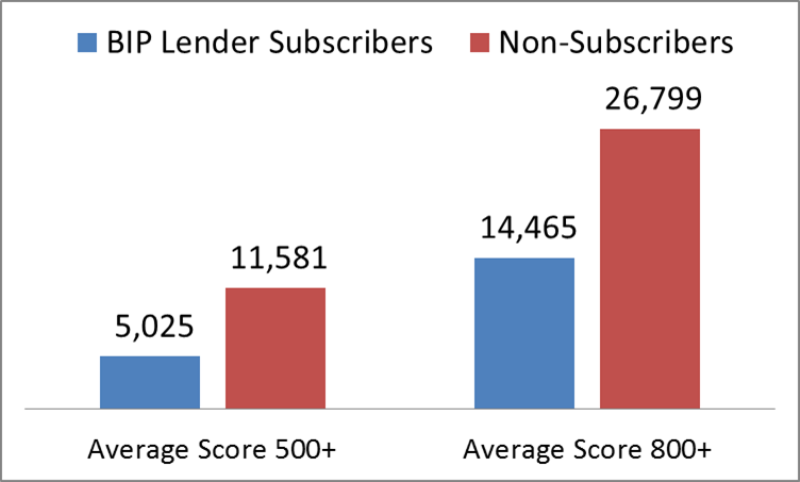
Much of the Building Indicator Project’s success is due to collaboration. Public-private partnerships helped create a robust, useful tool for many stakeholders. We have used our Multifamily Assistance Center and Building Indicator Project to partner with lenders, regulators, community groups, and the City of New York to aid in the improvement of tens of thousands of rental units in the Bronx and across the City. As the lending landscape changes, so must the tools we use to protect and preserve safe and affordable housing in New York City. Existing tools measure units that are often already lost or where the homeless lived before they went to a shelter. We need to proactively identify, protect, and preserve this affordable, privately owned multifamily rental housing stock, as it is vital to prevent further loss of affordable units and increased homelessness. This blog series has offered many suggestions for how to “keep the homeless at home,” and as part of that effort, UNHP would like to see an increased emphasis on proactive code enforcement with roof-to-cellar inspections made in buildings identified as at-risk, a move towards the regulation of non-traditional lenders, and more accessible data around tenant complaints, and NYC water and sewer data.
